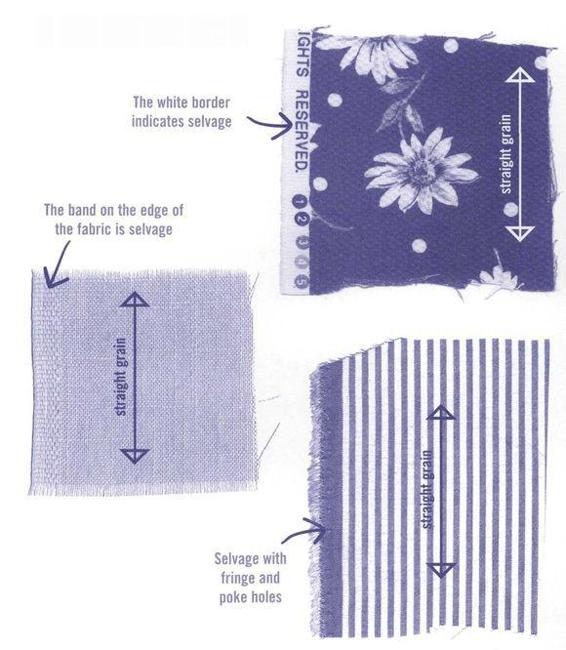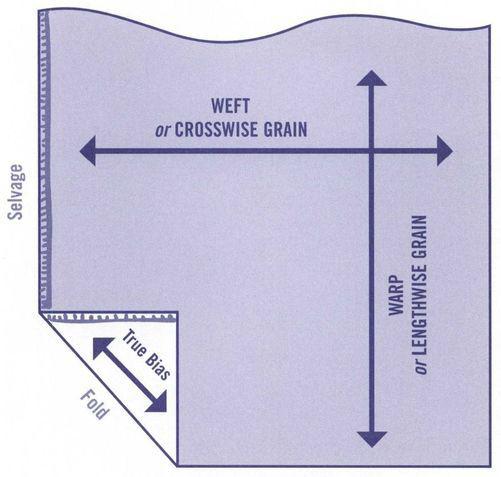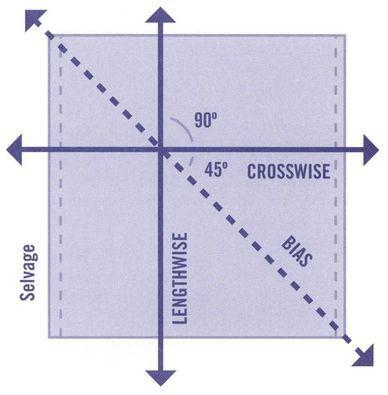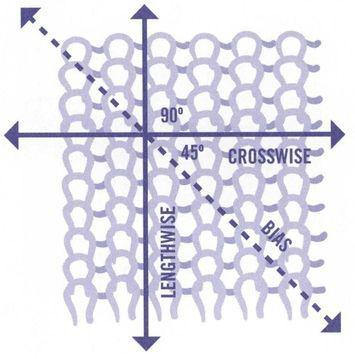Sew Fast Sew Easy: All You Need to Know When You Start to Sew (4 page)
Read Sew Fast Sew Easy: All You Need to Know When You Start to Sew Online
Authors: Elissa K. Meyrich

Warm and fuzzy.
Fake furs come in leopard, pony skin, zebra, and many other patterns. There are even furs that look like ostrich feathers. Then there is that wonderful stuff called polar fleece (a knit). There are so many varieties of fleece—some are brushed on both sides and some just have one side brushed up. Also consider brushed wools, such as mohair.
High-tech, high-performance.
When you think of performance fabrics, you probably think of the words acrylic, spandex, and cool max. These are the fibers that are woven into performance fabrics so they stretch, keep out cold, and absorb perspiration, making them perfect for athletic clothes. But a cotton and Lycra stretch knit would make a great slinky, sexy elastic-waist skirt. Some rainwear fabrics also look great as tote bags.
Home decoration fabrics.
Woven tapestries make gorgeous pillows and come in lush big prints. If you purchase a home decoration fabric in a print, check to see if the print is “one directional”—after all, you don’t want upside-down roses on your skirt. These fabrics look great as tote bags too.
STRAIGHT GRAIN
Many sewers are unaware of the importance of finding their fabric’s
straight grain
before cutting out their pattern. But this step is crucial for making any garment that hangs properly when worn. Here’s how to find the straight grain of your woven fabric.
When fabrics are woven each side of the fabric is finished without a frayed edge. This edge is called a
selvage.
The selvage runs along the length of the fabric of both sides.
Looking carefully at the fabric you bought, you will be able to identify the selvage by asking yourself these questions: Does it have little holes poked into it? Does it have a little fringe running along either side? Or does it have a woven or printed band running along either side?
DIFFERENT KINDS OF SELVAGE

Now you know you have found the
lengthwise straight grain
of your fabric by locating the selvages. The lengthwise grain in textile terms is called the
warp.
The warp threads in a woven fabric are the strongest part of the fabric because they are pulled tightly during the weaving process.
The
weft
is the
cross grain
of the fabric. The weft threads run back and forth from selvage to selvage of the fabric. The weft has a little give and is softer than the warp.
FABRIC GRAIN IN WOVENS

BIAS IN WOVENS

Bias
is a term used to describe any diagonal across the fabric. The bias makes the fabric hang soft and drapey. But the true bias is created only by a 45-degree angle from the fabric’s straight grain. The bias hugs the body and takes the shape of the body’s contours. It has the greatest stretch and will drape beautifully. You will often see designers create sexy evening dresses by cutting them on the true bias. You can use a bias cut to make bias strips for a neckline, armhole finish, soft bows, and cording as well as other uses. Generally, bias-cut garments use more yardage and therefore are more expensive.
Most garments are cut on the straight grain (with the lengthwise threads hanging down on your body) because it is the lengthwise threads that hold the garment in its shape. The cross grain threads fit softer around the body.
Keep these properties of fabric in mind as you begin to lay out your fabric. If you just cut out your fabric in any old direction, you will get a skirt that won’t hang properly.
CLOSE-UP OF A KNIT FABRIC
SHOWING BOTH GRAIN AND BIAS

For knits you can identify the running length by finding the approximately one-inch band of glue blotches or fine poke holes along both cut edges of the fabric. (Knits do not have a straight grain since they are not interwoven.)
FINDING SELVAGE ON A KNIT FABRIC

Before You Start Cutting:
PATTERN AND SEWING TERMS YOU SHOULD KNOW
Before you start cutting out your fabric, familiarize yourself with the following terms and symbols. They will help you in laying out your patterns properly.

Straight grain
. This symbol means that it should be placed parallel to the selvage (or fold) of the fabric. Always use a ruler to make sure that you are equidistant from the selvage of the fabric to each end of the straight grain line.

Place on fold of fabric
. This symbol means the pattern should be pinned to the
fold line
of the fabric.

Notches.
These symbols are very important since they are matching points to other pattern pieces or markings. After you’ve cut your pattern out, but before you
un
pin it, check to see that you’ve notched your fabric. Using the tips of your scissors, just
clip
into the center of the notch. DO NOT cut out the triangle; it’s time-consuming and unnecessary.
